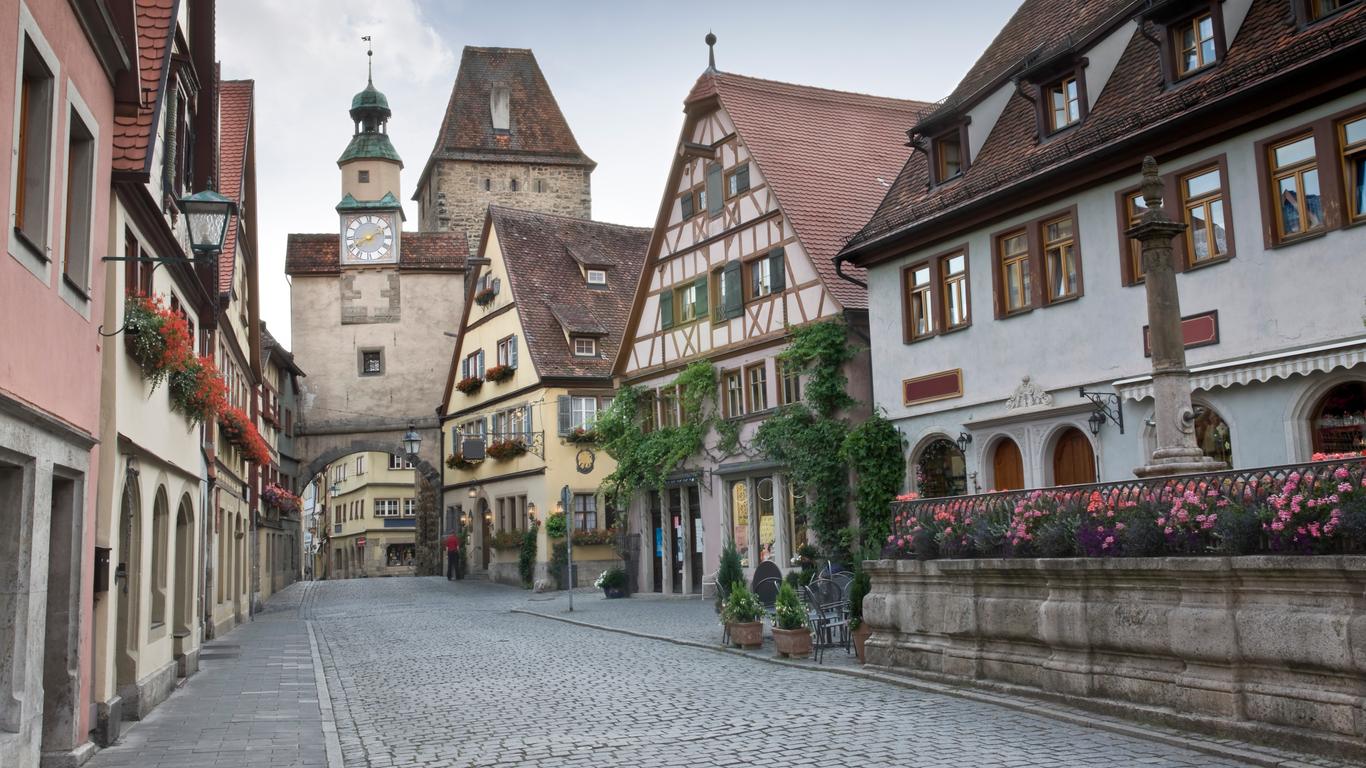Situated on the Romantic Road tourist route, about halfway between Frankfurt and Munich, is Rothenburg ob der Tauber. This Bavarian city is renowned for its beautifully-preserved medieval old town, encircled by 14th century city walls.
The town clusters around Marktplatz, with the Renaissance-style Town Hall on its western edge offering impressive views from its 50-metre high tower. St. George’s Fountain lies in the south of the square, while the Councillors’ Tavern and tourist information centre are situated along its northern edge. A short walk from Marktplatz is the Medieval Crime and Punishment Museum which features instruments of torture used throughout the last 1,000 years, as well as the Plönlein, one of the most photographed locations in Germany whose narrow timber building and small fountain are framed by the 14th century Kobolzeller and Siebers Towers. Other museums of note include the Imperial City Museum with an impressive weapons collection, the Doll and Toy Museum, as well as the Craft House which recreates the life of medieval craftsmen. Just to the north of Marktplatz is the Church of St. Jacob, famed for its altar sculpted by Tilman Riemenschneider. The town is encircled by ancient walls marked by several gates and towers, and the walk from the 16th century Spitaltor to the Klingentor along the wall is one of the most rewarding, offering excellent photographic opportunities.
Rothenburg ob der Tauber is connected to other cities across Bavaria by train, with the station situated a short walk to the east of Marktplatz. For those coming by car, the Romantic Road connects the town to Würzburg in the north and Dinkelsbühl to the south. Within the city walls, it’s far better to explore on foot, however, and all of the historic sights are situated within a short walk from one another.
Rothenburg Castle was built on a mountain overlooking the Tauber River in 1070, and the settlement functioned as a Free Imperial City of the Holy Roman Empire from 1274-1803. Since that time it formed part of Bavaria, attracting Romanticist artists such as Hans Thomas and Carl Spitzweg before the first tourists began arriving at the end of the 19th century.





